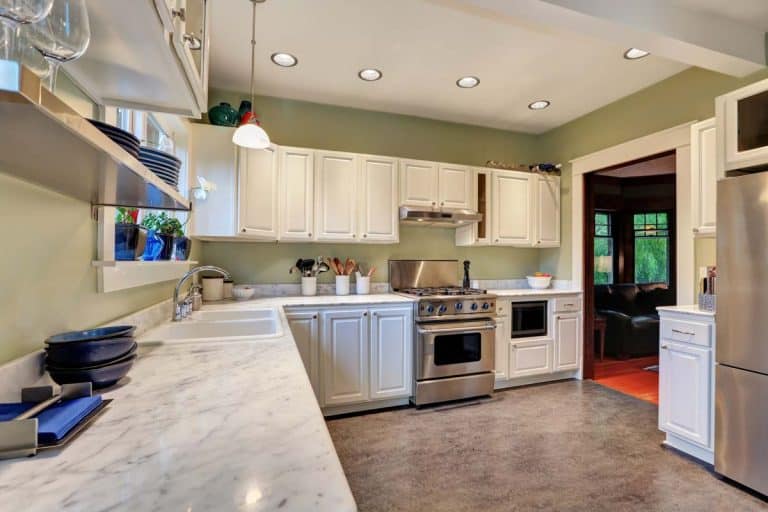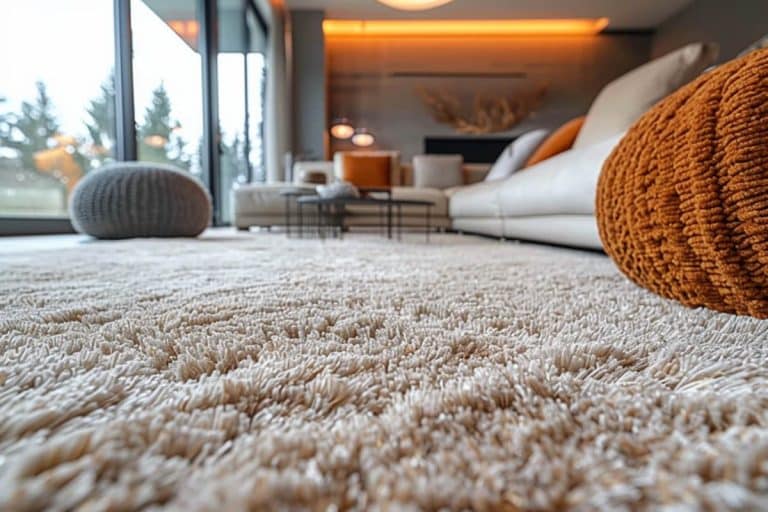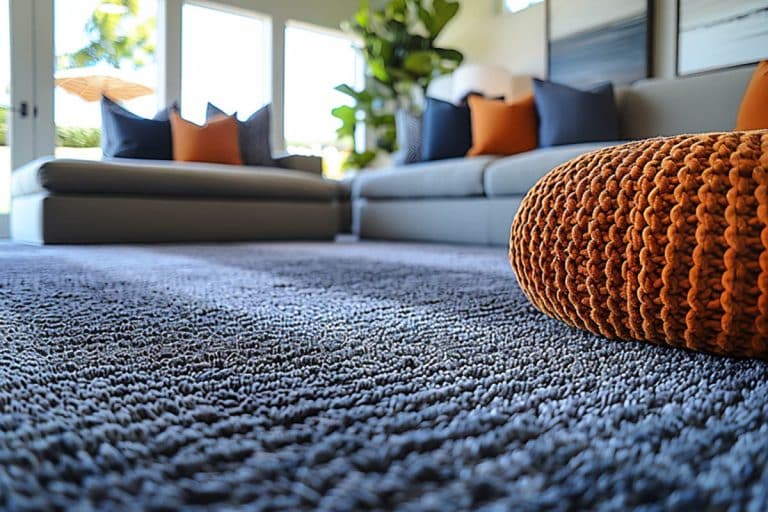Engineered Hardwood Flooring vs Laminate
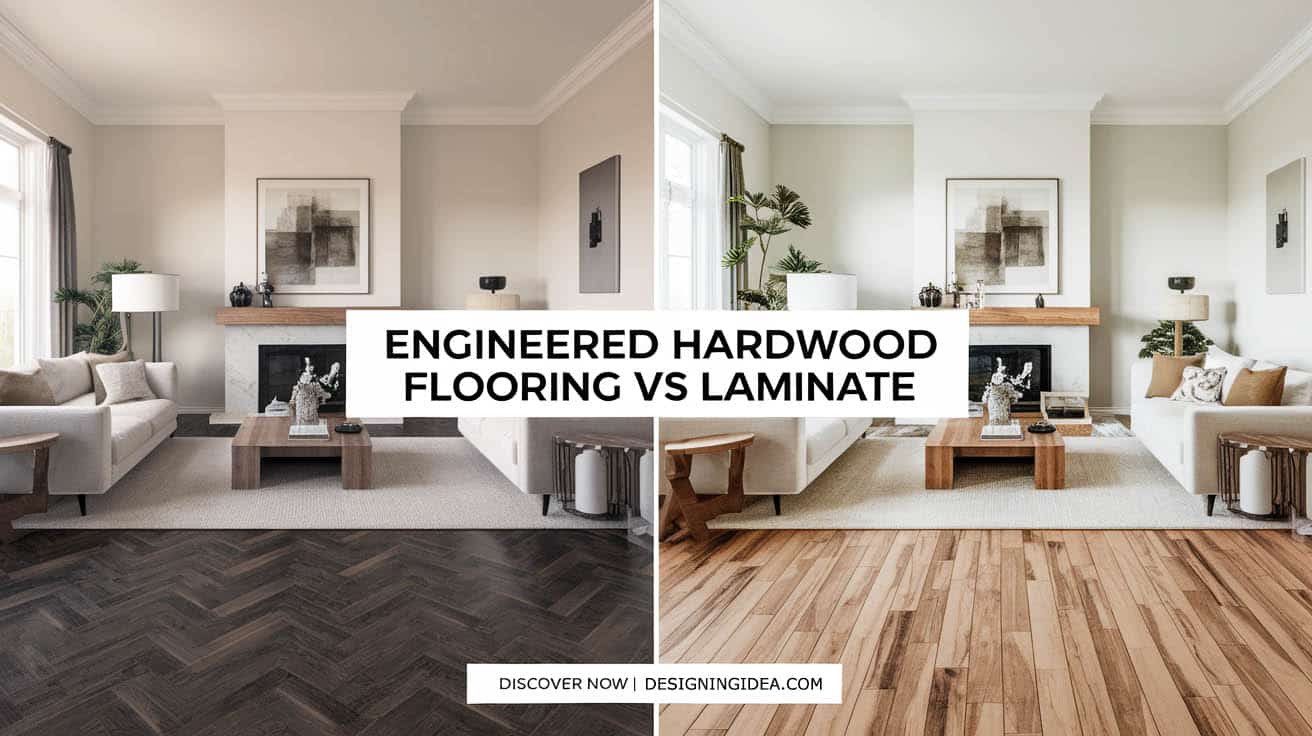
Choosing between laminate flooring and engineered wood flooring could be a big decision. We are here to help make the decision a little easier. With two different materials, such as engineered hardwood flooring and laminate flooring, it is good to take all their features into consideration. At the same time, cost may seem like the biggest deal now, in the future, you may kick yourself for not considering the resale value or length of life. Appearance may be what you are determined to get, but later, you realize that the material you picked is not suitable for the setting. Comparing the features below will help you make the most educated decision for your new flooring.
Differences Between Engineered Hardwood vs Laminate
First off, it is important to know what each of the types of flooring that you are comparing are made of, what they look like and other features they include. The materials, appearance, installation methods, resale value and even the length of life are all vastly different when it comes to comparing laminate and engineered hardwood floors. If anything, these two materials are on opposite sides of the spectrum. A brief description of each is as follows to show the differences.
What Is Engineered Hard Wood Flooring?
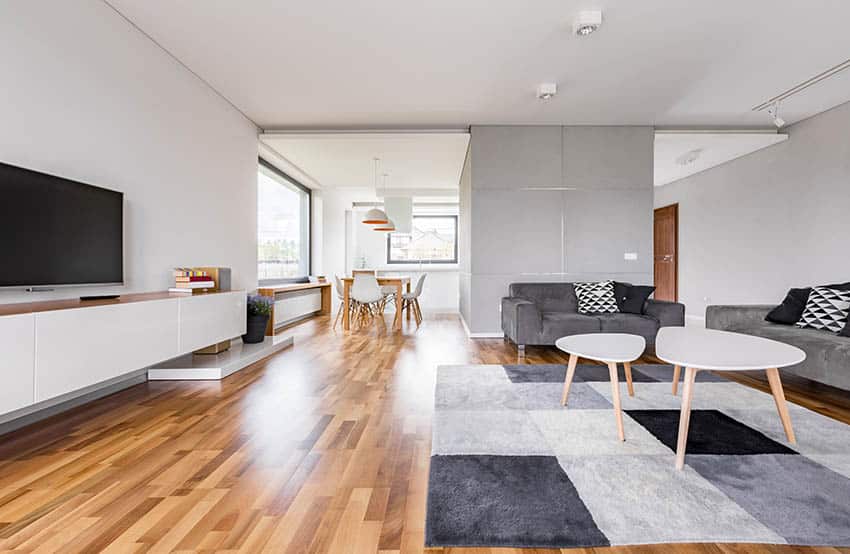
Materials: Engineered hardwood is a thin layer of real hardwood with an engineered middle to add depth and strength without too large a price increase.
Appearance: Engineered hardwood is the closest one can get to genuine hardwood material because it contains a bit of the real thing, which gives the appearance that it is real hardwood.
Material: The engineered part in the middle is typically a higher-quality substrate plywood. This gives a fantastic dimensional stability, which can sometimes be better for choice than having hardwood all the way through the planks.
Installation: Engineered hardwood planks are typically installed with a nail gun or glue-down method. This is a pretty permanent and relatively difficult installation for anyone looking for a new do-it-yourself project. It is recommended to hire a professional to install engineered wood floors.
Resale Value: Since the surface of engineered hardwood is exactly the same as regular hardwood flooring, it is highly desired. The only difference is in the makeup, and in real estate people often judge the book by its cover.
The resale value for adding engineered hardwood floors is pretty high, not as high as the real hardwood floors, but you will save money on the materials and installation of the engineered wood in the long run.
Length of Life: The life of engineered hardwood is great, but not as great as that of true hardwood, but for the price, it compares well. Engineered wood can last 30 or more years!
Taking care of the floors can only add to the life. Unlike true hardwood, engineered wood cannot repeatedly be sanded and redone since there is only a thin layer of the real wood on the planks.
What Is Laminate Flooring?
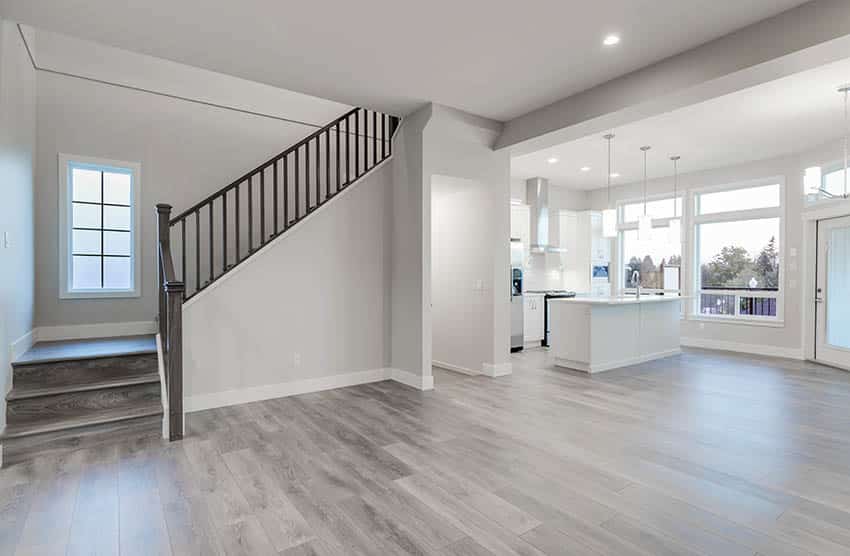
Materials: Laminate is made from all man-made materials. It has many layers, such as fiberboard and other fluff, with a photographic layer with whatever image is so desired, and to top it off, there is a clear wear layer that protects the pictures printed on. This wear layer can vary in thickness based on the type you buy.
Appearance: The appearance of laminate is basically a photograph of whatever you want the flooring to look like. This is commonly wood or stones, as they are meant to be an inexpensive alternative to the true material.
There are opportunities to get very detailed replicas of some woods and stones with simulated textures and grains in the materials to help provide the illusion of wood and stones. Typically, the more realistic you get, the higher the price will be.
Installation: The installation of the floating wood tile is quite an easy process. This is a common do-it-yourself project, but if you are not particularly handy, it is an inexpensive project to hire out.
Laminate is most commonly installed with the floating floor method. The floating floor planks have a system to the edges where they lock into each other to create a surface above the initial subfloor or even another flooring.
This is a material that can be installed over another as it does not require glue or nails that could ruin the flooring underneath.
Resale Value: Laminate is an inexpensive material to begin with; therefore, earning the money back in the sale of the home is not a great feat.
Although there are many upsides to using laminate floors, it is not as sought after as wood or stone. This does not mean a house will not sell if it has laminate floors, just that the floors are not going to be the most magnificent part as it is an obvious ‘fake’ wood flooring.
Length of life: As with the resale value, the longevity of laminate is not as high as the previously described engineered wood.
Overall, the general lifespan of laminate floor systems is about 10 to 20 years if they are properly maintained, which is not bad at all for the inexpensiveness of the materials and install.
Engineered Wood vs Laminate Cost
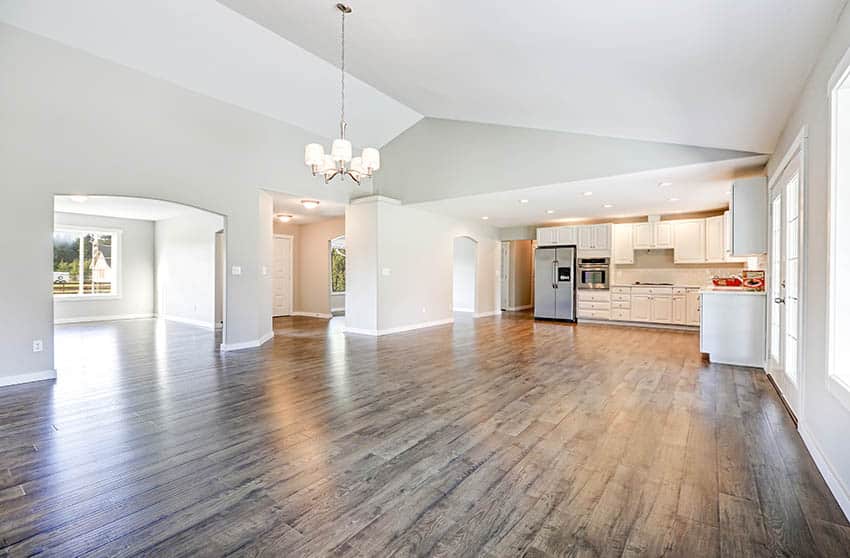
Engineered Board Flooring Cost
Engineered wood is somewhat of a happy medium; it is not quite as expensive as true hardwood but not quite as inexpensive as a complete fake such as laminate.
Typically, engineered wood runs from about $5 to $10 per square foot. This price can fluctuate with styles, sizes, and woods but usually fits within that price range.
When it comes to installation, though, it brings the price per square foot up almost double with an addition of $5 to $10 per square foot.
That covers the labor and materials needed to glue or nail down the material. This is not typically something someone should try themselves, so it really drives the price up when that is something that is highly recommended.
Laminate Flooring Cost
Laminate is typically known as one of the most inexpensive materials that can be selected. Typically, laminate floors run from about $1 to $3 per square foot.
This being said, there are a great deal of factors that can raise this price. Wear layers can change the price, as well as the length of life on the laminate product; the thicker the wear layer, the more expensive and the longer the life.
Additionally, the cost can rise with the design of the planks themselves. This can include any custom imagery that can be used or the amount of texture that is added for realism in the wear layer.
It is totally realistic to spend up to $10 to $12 per square foot if you are getting really creative with the laminate choices. This is still a great price compared to some of the other materials, but it has the same quality that laminate is known for.
None of this cost includes installation either. Luckily, it is extremely easy to install and can be done by an amateur or for $1 to $2 extra dollars per square foot.
Hardwood vs Laminate – Which Is Better

Generally, one material is not ‘ better’ than another, just better for different areas or situations based on the buyer’s needs. Below are some of the features that each is better for engineered wood flooring vs laminate.
Materials (durability, maintenance, etc): Both materials are susceptible to water damage if they get past the barriers.
Floating wood tiles are easier to clean, but if they get damaged, they cannot be fixed. On the other hand, composite floors can be redone at least once.
Overall, the latter is just a little bit more durable than laminates due to the ability to refinish it once, if not twice.
Appearance: In the sense of looking to mimic true hardwood floors, engineered hardwood wins. With the thin layer of real wood on the top, it is hard to beat that with just a photograph.
Installation: Laminates are a great deal easier to install with its floating floor system. Additionally, it does not ruin the subfloor or whatever material may be underneath, and it makes it an easy de-installation as well. On the other hand, composite floors require nails or glue and professional assistance in most cases.
Resale Value: Composite wood floors do a better job at pretending to be hardwood, so it is better for potential buyers when selling a building.
Length of Life: Composite floors can last up to 30 years and can be refinished at least once. This definitely outweighs the 10 to 20-year lifespan of the laminates.
Cost: Laminate is by far the less expensive option when comparing it to engineered wood. The price point is one of the biggest selling points for this material.
Which is your favorite when it comes to engineered hardwood floors vs floating wood boards? Let us know in the comments below. To read more related content, visit our page on laminate vs solid hardwood flooring.

